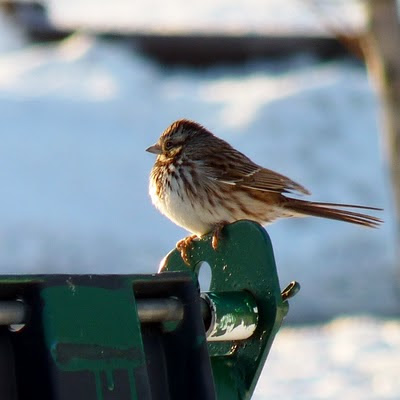Birds and birding news
- A Chinese Crested Tern (Sterna bernsteini) was found wintering in Indonesia. This tern is one of the rarest species in Asia and is classified as Critically Endangered.
- The US Fish and Wildlife Service will list 7 South American bird species as endangered under the Endangered Species Act. The seven birds are: black-headed antwren, the cherry-throated tanager, Brazilian merganser, the fringe-backed fire-eye, Kaempfer’s tody-tyrant, the Margaretta’s hermit, and the southeastern rufous-vented ground-cuckoo.
- Several South American countries have committed to an action plan to preserve habitat for migratory grassland birds.
- In recent years, scientists in Peru have found about one new bird species per year.
- The BBC has photos of British birds surviving the island's harsh winter.
- The roof of the Carolina Waterfowl Rescue collapsed under the weight of snow that fell during the recent nor'easter.
- The Gorgias Science Foundation plans to reopen the Sabal Palm Audubon Sanctuary in Texas, starting on January 3, 2011. The sanctuary had closed due to lack of funds.
- 10,000 Birds: Blitzing for Blackbirds
- Earbirding: The Vowels of Birds
- View from the Cape: Chickadee I.D.
- JournOwl: Burrowing Owls Embark on Cross-Continent Migration
- The Nemesis Bird: Bald Eagle eating another Bald Eagle
- The New York Times has a major article on the events and decisions leading up to the Deepwater Horizon explosion. It includes an interactive feature showing how the rig's crew reacted.
- The recent blizzard in the northeastern U.S. is not evidence against a warming climate. The past year was the third warmest on record, and 2001-2010 was the warmest decade on record. Heavy snowstorms may be compatible with a warmer climate since warming increases the amount of moisture in the atmosphere, and that moisture will fall as snow in places where the temperature is cold enough for it.
- The EPA announced a road map to reduce pollution flowing into the Chesapeake Bay – 25% reduction of nitrogen, 24% of phosphorus, and 20% of sediment – by 2025. The plan sets specific goals for six states and the District of Columbia to meet, with a special focus on the bay's headwaters in New York, Pennsylvania, and West Virginia. Previous plans have caused some improvement in the bay's health, but not nearly as much as needed.
- NOAA will list Ringed and Bearded Seals as threatened under the Endangered Species Act. Major threats to both species are related to climate change.
- New York bought conservation rights to 89,000 acres of forest in the Adirondacks from the Nature Conservancy, which had purchased the lands from a former paper company.
- Massachusetts announced a plan to reduce greenhouse gas emissions from the state 25% below 1990 levels by 2020.
- The UK government tried to get rid of nature preserves by giving them to wildlife charities, but the charities want sufficient funding to manage the sites properly.
- 80% of the antibiotics sold in the United States are used to medicate farm animals.
- Mongabay.com lists its most popular environmental stories from 2010, and LiveScience lists the biggest natural disasters of the past year.























































